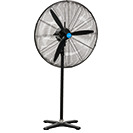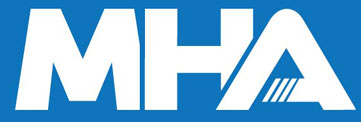The Importance of Training Employees to Use Handling Equipment Safely
Date Posted:15 November 2024
By prioritising safety training, organisations can protect their most valuable asset— their employees— while enhancing productivity, reducing costs, and fostering a positive work environment.
In today’s fast-paced work environment, handling equipment is an integral part of operations across various industries. From warehouses to construction sites, these tools enhance productivity and efficiency. However, the improper use of handling equipment can lead to serious accidents, injuries, and even fatalities. This highlights the critical importance of training employees to use handling equipment safely.
Understanding the Risks
Handling equipment encompasses a wide range of tools, including forklifts, pallet jacks, conveyor systems, and trolleys. Each of these devices, while designed to improve workflow and safety, carries inherent risks if misused. According to Safe Work Australia, approximately 36,000 workplace injuries involving manual handling are reported annually, leading to significant economic and social costs. The risks associated with handling equipment can include:
- Physical Injuries: Improper use can lead to injuries such as sprains, strains, and fractures.
- Equipment Damage: Mishandling can result in damage to the equipment itself, leading to costly repairs or replacements.
- Product Damage: Poor handling techniques can damage products, resulting in financial losses and reduced customer satisfaction.
- Legal Consequences: Failure to adhere to safety regulations can lead to legal repercussions for employers, including fines and increased insurance premiums.
The Benefits of Proper Training
Investing in comprehensive training programs for handling equipment offers numerous benefits:
1. Enhanced Safety: Training ensures that employees understand how to use equipment correctly, significantly reducing the risk of accidents and injuries. A well-trained workforce is more aware of potential hazards and equipped to mitigate them.
2. Increased Productivity: When employees are trained properly, they become more efficient in using equipment, leading to smoother operations and increased productivity. Knowledgeable employees can handle tasks more quickly and effectively, minimising downtime.
3. Lower Costs: Effective training can lead to fewer accidents and, consequently, lower costs associated with medical claims, equipment repairs, and insurance premiums. Investing in training upfront can save businesses significant money in the long run.
4. Employee Confidence: Training builds employees’ confidence in their abilities to operate equipment safely. This empowerment can lead to a more positive workplace culture, where employees feel valued and motivated to perform their best.
5. Regulatory Compliance: Many industries are governed by strict safety regulations. Training employees on the safe use of handling equipment ensures compliance with these regulations, protecting the organisation from legal issues and fines.
Key Components of an Effective Training Program
To maximise the benefits of training, businesses should consider the following components when developing their handling equipment training program:
1. Assess Training Needs: Identify the specific handling equipment used within the organisation and evaluate the existing skill levels of employees. Tailor training programs to address the specific needs and risks associated with each type of equipment.
2. Hands-On Training: Practical, hands-on training is crucial. Employees should have the opportunity to practice using equipment under the supervision of a qualified trainer. This approach helps reinforce learning and builds confidence.
3. Regular Refresher Courses: Regular refresher training ensures that employees stay up to date with the latest safety protocols and equipment changes. This practice is especially important in industries where handling equipment may frequently change or evolve.
4. Safety Protocols and Procedures: Incorporate safety protocols and procedures into the training program. Employees should be well-versed in how to handle emergencies, such as equipment malfunctions or accidents, to minimise risks.
5. Evaluation and Feedback: Implement a system for evaluating the effectiveness of the training program. Collect feedback from employees to identify areas for improvement and adapt the training as needed.
Fostering a Safety Culture
Creating a culture of safety within the organisation is essential. This culture should prioritise safety at every level and encourage open communication regarding safety concerns. Here are some strategies to foster a safety culture:
- Leadership Commitment: Leaders should model safe behaviour and actively promote safety initiatives. Their commitment to safety will encourage employees to prioritise it as well.
- Encourage Reporting: Employees should feel comfortable reporting safety concerns without fear of repercussions. Establishing a non-punitive reporting system can help identify potential hazards before they lead to incidents.
- Recognise Safe Practices: Implement reward systems to recognise employees who consistently demonstrate safe handling practices. Positive reinforcement can motivate others to follow suit.
- Involve Employees in Training Development: Engaging employees in the development of training programs can increase buy-in and ensure that the training addresses real-world challenges they face on the job.
The importance of training employees to use handling equipment safely cannot be overstated. As industries continue to evolve and handling equipment becomes more advanced, investing in employee training is critical to ensuring a safe and productive workplace. By prioritising safety training, organisations can protect their most valuable asset— their employees— while enhancing productivity, reducing costs, and fostering a positive work environment. Ultimately, a commitment to safety through effective training not only meets regulatory requirements but also promotes a culture of care and responsibility, benefitting everyone involved.
Ensuring that employees are trained in the safe use of handling equipment is not just a legal obligation; it’s a moral imperative that pays dividends in the long run. By cultivating a knowledgeable and skilled workforce, businesses can navigate the complexities of modern operations while safeguarding their employees and assets.
































































































































 Trolleys & Hand Trucks
Trolleys & Hand Trucks Cage Trolleys
Cage Trolleys Cleaning Carts & Trolleys
Cleaning Carts & Trolleys Construction Trolleys
Construction Trolleys Custom Trolleys
Custom Trolleys Hand Trucks & Dollies
Hand Trucks & Dollies Laundry/Linen Trolleys
Laundry/Linen Trolleys Lifting Trolleys
Lifting Trolleys Order Picking Trolleys
Order Picking Trolleys Panel Cart Trolleys
Panel Cart Trolleys Platform Trolleys
Platform Trolleys Powered Trolleys
Powered Trolleys Shelf & Tiered Trolleys
Shelf & Tiered Trolleys Shopping Trolleys
Shopping Trolleys Stainless Steel Trolleys
Stainless Steel Trolleys Tool Trolleys
Tool Trolleys Utility & Service Carts
Utility & Service Carts Lifting & Handling Equipment
Lifting & Handling Equipment Forklift Attachments
Forklift Attachments Jib Attachments
Jib Attachments Lifting Hoists & Pallet Hooks
Lifting Hoists & Pallet Hooks Load Skates & Tow Tugs
Load Skates & Tow Tugs Manual Stackers & Lifters
Manual Stackers & Lifters Pallet Jacks
Pallet Jacks Pallet Lifters
Pallet Lifters Pallet Rotators & Dispenser
Pallet Rotators & Dispenser Powered Pallet Trucks & Electric Lifters
Powered Pallet Trucks & Electric Lifters Scissor Lift Trolleys and Tables
Scissor Lift Trolleys and Tables Conveyor Equipment
Conveyor Equipment Conveyor Frames & Stands
Conveyor Frames & Stands Roller & Skate Conveyors
Roller & Skate Conveyors Ladders & Access Equipment
Ladders & Access Equipment Container & Yard Ramps
Container & Yard Ramps Ladders & Step Stools
Ladders & Step Stools Work Platforms & Crane Cages
Work Platforms & Crane Cages Drum Handling Equipment
Drum Handling Equipment Drum Storage & Bunding
Drum Storage & Bunding Drum Trolleys & Lifters
Drum Trolleys & Lifters Forklift Drum Handling
Forklift Drum Handling Waste Handling & Bins
Waste Handling & Bins Bin Lifters & Tippers
Bin Lifters & Tippers Plastic Waste & Wheelie Bins
Plastic Waste & Wheelie Bins Steel Waste & Tipping Bins
Steel Waste & Tipping Bins Waste Carts
Waste Carts Dangerous Goods Storage & Spillage
Dangerous Goods Storage & Spillage Aerosol Cans Storage Cages
Aerosol Cans Storage Cages Bunded Pallets & Storage
Bunded Pallets & Storage Corrosive Goods Storage Cabinets
Corrosive Goods Storage Cabinets DG Storage & Trolleys
DG Storage & Trolleys Flammable Liquid Cabinets
Flammable Liquid Cabinets Forklift Gas Storage Cages
Forklift Gas Storage Cages Site Storage
Site Storage Spill Kits
Spill Kits Shelving & Storage Equipment
Shelving & Storage Equipment Stillage & Transport Cages
Stillage & Transport Cages 750 Series Cage Configurations
750 Series Cage Configurations Heavy Duty Cabinets
Heavy Duty Cabinets Heavy Duty Shelving
Heavy Duty Shelving Mega Bins & Pallets
Mega Bins & Pallets Packing & Workbenches
Packing & Workbenches Parts Trays & Stor-Pak Bins
Parts Trays & Stor-Pak Bins Pegboard & Louvre Panels
Pegboard & Louvre Panels Plastic Bins & Crates
Plastic Bins & Crates Plastic Handling Solutions Bins
Plastic Handling Solutions Bins Plastic Pallets
Plastic Pallets Stack & Nest Bins
Stack & Nest Bins Pallet Racking Accessories
Pallet Racking Accessories Workplace Equipment
Workplace Equipment Modular Workbenches
Modular Workbenches Electric Height-Adjustable Workbenches
Electric Height-Adjustable Workbenches Floor Matting
Floor Matting General Workplace Equipment
General Workplace Equipment Industrial Weighing Scales
Industrial Weighing Scales Packaging Machinery
Packaging Machinery Stationery Cupboards
Stationery Cupboards Storage and Stillage Cages
Storage and Stillage Cages Tool Trolleys
Tool Trolleys Tooling Cabinets
Tooling Cabinets Workshop Fans and Coolers
Workshop Fans and Coolers Safety Barriers, PPE & Signage
Safety Barriers, PPE & Signage Barriers & Bollards
Barriers & Bollards First Aid Equipment
First Aid Equipment Gloves, Knives and PPE
Gloves, Knives and PPE Signage
Signage Cleaning & Site Supplies
Cleaning & Site Supplies Cleaning Equipment
Cleaning Equipment Cleaning Trolleys
Cleaning Trolleys Rubbish Bins
Rubbish Bins Signs & Traffic Supplies
Signs & Traffic Supplies Construction Equipment
Construction Equipment Construction Trolleys
Construction Trolleys Waste Handling
Waste Handling General Site Equipment
General Site Equipment Concrete Equipment
Concrete Equipment Site Storage
Site Storage Lifting Equipment
Lifting Equipment Verdex Specials
Verdex Specials









